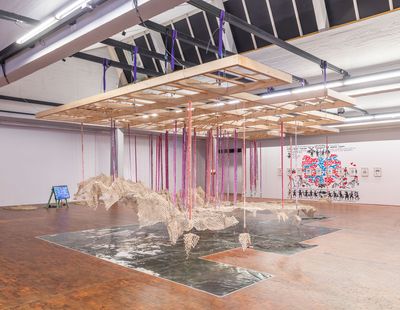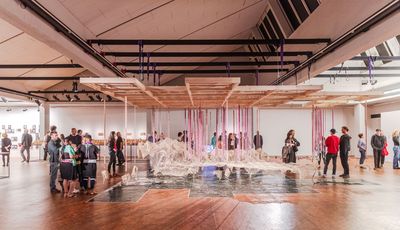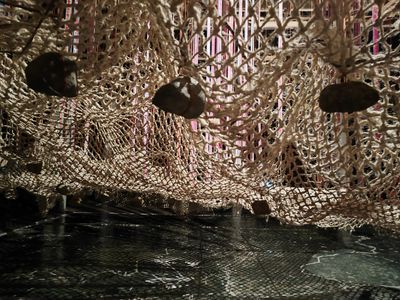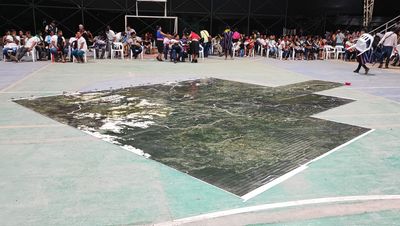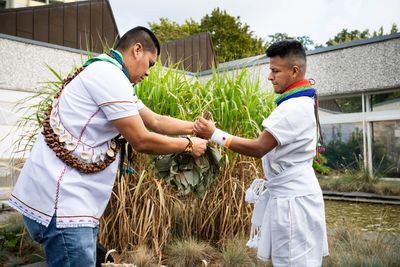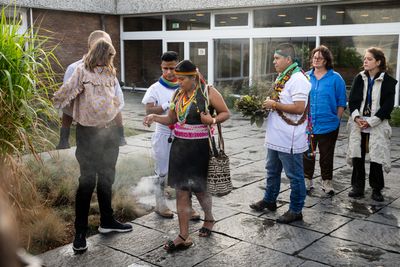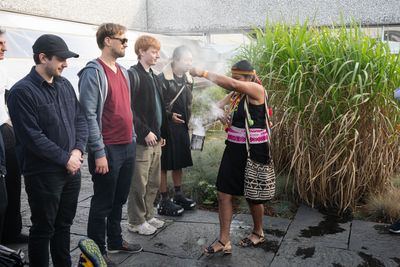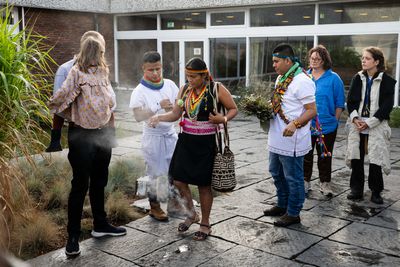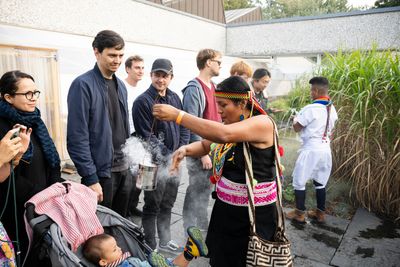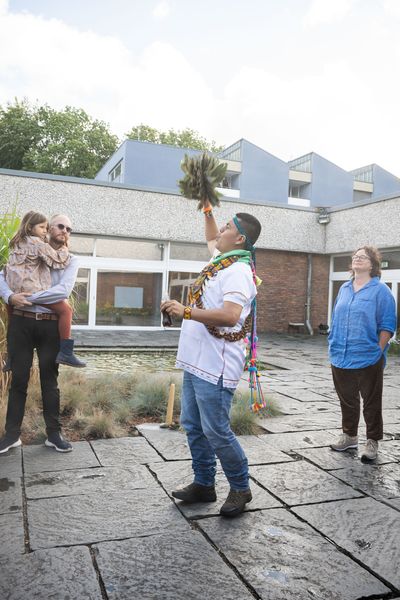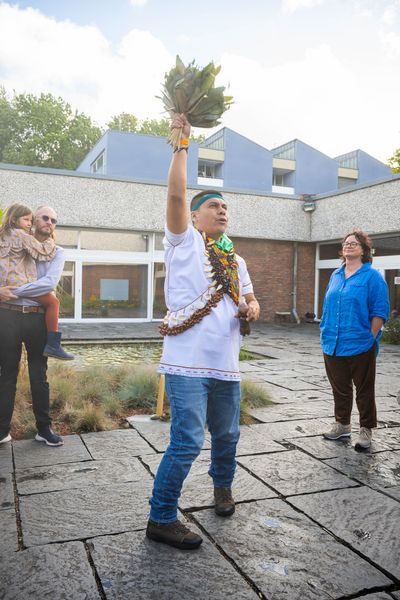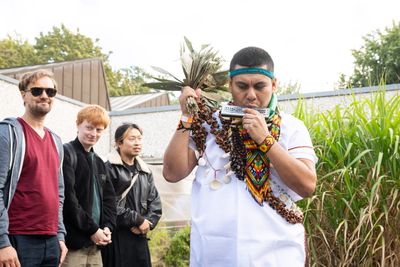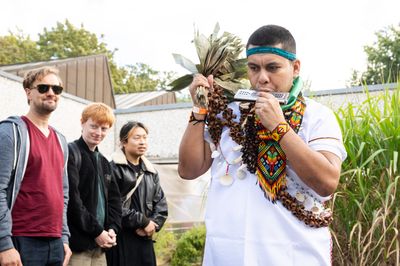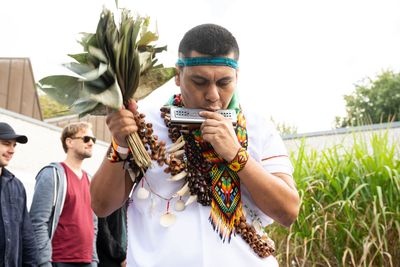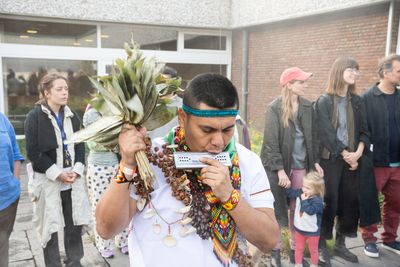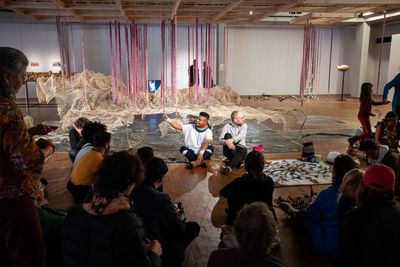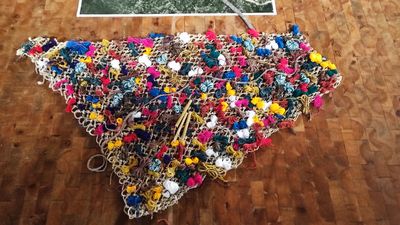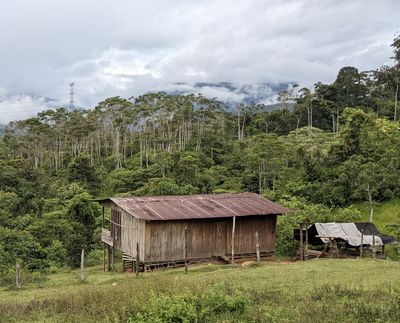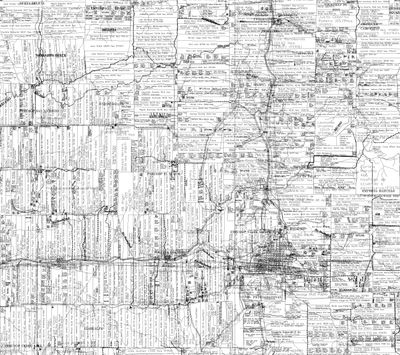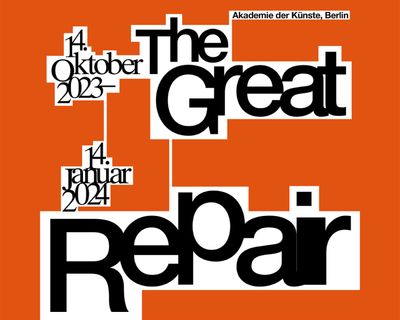Akademie der Künste, Berlin
Awaska Alpa_woven Territory
Awaska Alpa is a research project that critically explores the representation of Inga territory in the Andean Amazon of Colombia. During colonial times, the Spanish crown established the Indigenous resguardo (reserve) as a form of collective land tenure to “protect,” meaning to contain and control, Indigenous Peoples. Today, this is still the only form used by the state and international organizations to formally recognize Indigenous territory. By looking closely at Inga forms of organization, land occupation, and connectivity—both historical and contemporary—Awaska Alpa seeks to expand our understanding of Indigenous territory beyond what is acknowledged by national law.
Like many other Indigenous Peoples in Colombia, the Inga have been going through a process of cultural and territorial revindication ever since the Constituent Assembly of Colombia of 1991 recognized Indigenous reserves as fully autonomous territorial entities with their own authorities, self-administration of resources, and participation in national income. Although the new constitution marked a historical turning point for Indigenous rights in Colombia after centuries of violence and neglect, there is still no broader understanding of the real scale of Indigenous territories and the complex relations between Indigenous Peoples and their ancestral land.
In addition to 36 resguardos, Inga territory also comprises 94 cabildos. These politico-geographical units are only part of an intricate network of social, cultural, biological, and spiritual connections to forests, mountains, rivers, pathways, cities, and chagras (medicinal agroecological sites). Beyond occupied land, the Inga People also consider the peripheral landscapes “walked by the elders” as part of their ancestral heritage. Inga territory is, therefore, a complex web of relations that defies its simplistic representation of territory as legally recognized property.
For the Awaska Alpa project, representatives of eight different Inga zones located in the Andean highlands, Amazonian forests, and more than 20 cities nationwide came together over several months to collectively weave an 8-by-6-meter fabric landscape composing a three-dimensional representation of Inga territory. Colourful chumbe belts mark the location of Inga cabildos; plantain leaf fibres mark the limits of resguardos; iraka palm fibres represent rivers; and chakira beads stand for cities and towns. These elements are all interconnected by a mesh of cabuya fibre that forms a polygon of a less-official but more accurate Inga territory.
Awaska Alpa is not a finished object. It is an ongoing process of rediscovery and self-awareness that consolidates a territorial identity without negating the presence of others. It hopes to become a tool to repair a fragmented landscape that has fought for centuries with labour exploitation, cultural dispossession, as well as armed conflict, and that continues to struggle with the chronic violence often associated with illicit economies and non-renewable resource extraction.
Awaska Alpa: A Hands-on Moment Connected to the Andean Amazon Workshop
As part of the School of Repair, Freider Legarda, Viviana Jacanamejoy and Jean Mutumbajoy, representatives of the Inga People of Colombia, and Santiago del Hierro hosted a workshop related to biodiversity and the city. Participants first attended a harmonization ritual in the museum’s courtyard to synchronise everyone’s energies before visiting the maquette of Inga territory. Later, inside the gallery, they were asked to prepare colourful yarn butterflies and add them to a common fabric representing Berlin. Jean then led a conversation about the contrasts and similarities between life in the Amazon and how he perceived life in a metropolis. One of his most important messages to the audience: “Pause and reflect on the beautiful city you have created. Many of you can’t see it because you are too worried about moving on to the next thing. Slow down and remember to act with patience and love.”
